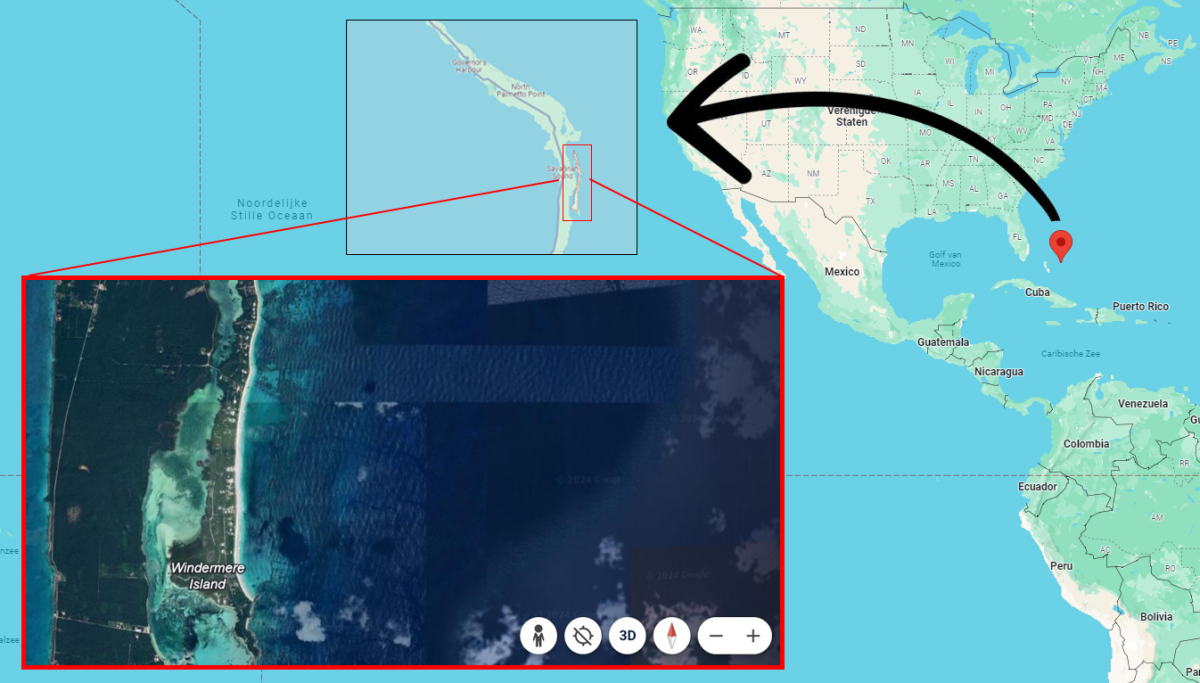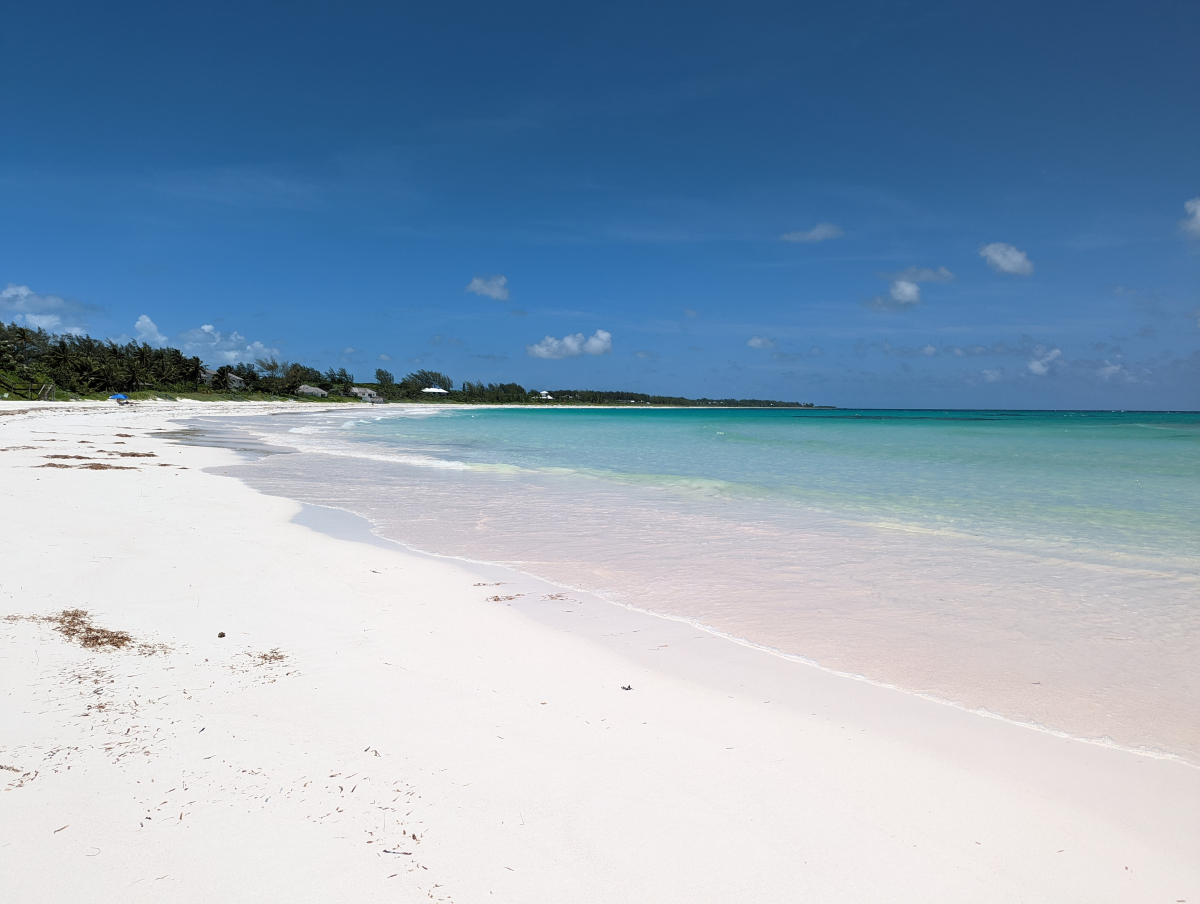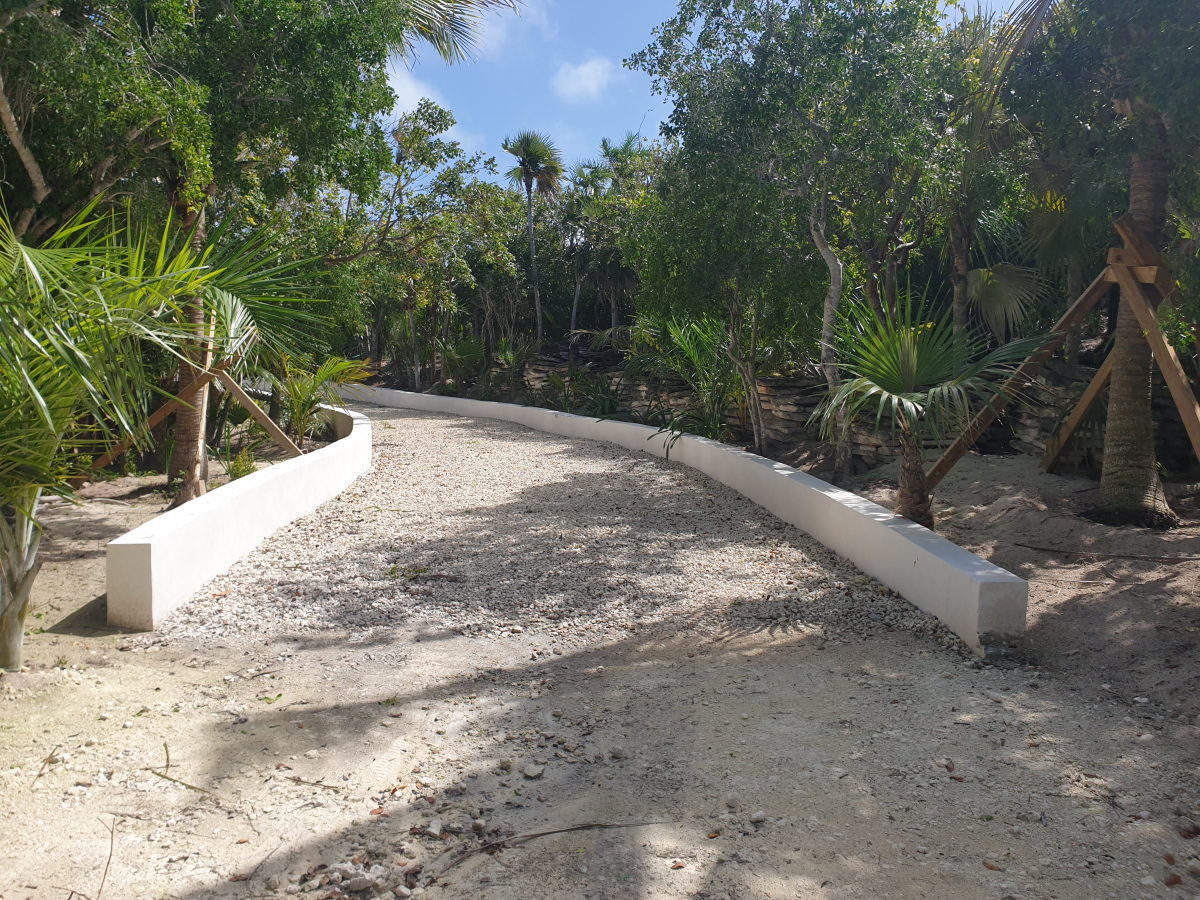- Home
- From Bare Sand to Lush Paradise: A Garden Success Story
From Bare Sand to Lush Paradise: A Garden Success Story
22/08/2024 - 10:00
Last year, Martin Solomon from the Bahamas reached out to us, recommended by a friend, to purchase TerraCottem for his beach project on Windermere. Six months ago, he contacted us again with a brief message: “A happy customer from your past. Can I place another order, please?” Naturally, we were delighted to assist and soon engaged in a series of messages and emails, exchanging photos of the remarkable results achieved with our “amazing product” – as Martin describes it. These were soon followed by images of his current project where he spent early summer overseeing Windermere Island community improvements to West Beach.
TerraCottem was integrated into the sandy soil throughout the gardens surrounding his Suriana Beach Cabana and Shearwater Condominiums. Initially, Martin Solomon used TerraCottem to enhance the plant survival rate and growth of large transplanted palms. However, once he witnessed its effectiveness, he began applying it to virtually everything newly planted.
Another key reason for using TerraCottem was its water conservation benefits.
Pressing him for more information on plant species and design elements, Martin put us in contact with landscape architect Jenna Chaplin of Terrain Design, with whom he’s worked with on three projects on the island:
- his personal cabana garden on the Atlantic coast
- the garden of a condominium complex just north of that
- the revitalization of a beach on the western side of the island.
Jenna responded promptly, and we had a delightful conversation via Teams.
To begin, Jenna explained the location of the garden: Windermere is a smaller Atlantic facing island east of Eleuthera, connected by a bridge. It has a sub-tropical climate with typical flora such as coconut palms, sabal palms, and sea grapes.

The garden is situated at the southern end. It has grown so well that all the construction has blended in with the surrounding vegetation and is no longer easily visible on Google Earth. The beach cabana is right on the beach, highly exposed to the Atlantic Ocean, with nothing between the island and Africa and Europe.

Jenna explains:
“As landscape architects, we work on many gardens in the Bahamas near the ocean, where many plants can struggle in the strong winds and high salt exposure. However, Martin's gardens are flourishing. They are thriving, and I must say a lot of the credit goes to your product.”
Most of the trees, palms, and shrubs you see in the photos have been planted. The major challenges are wind and salt because the air is very salty, even if you are not directly hit by the waves, there is a lot of airborne salt burning the leaves and landing on the soil. Another challenge is the soil quality. While the Bahamas is a beautiful country with stunning white sand beaches and turquoise waters, the soil lacks nutrients. It consists almost entirely of calcium carbonate sand and limestone, which makes it difficult to grow anything. That’s where TerraCottem’s water and nutrient holding capacity compensates for the soil’s shortcomings.
What was the site like before?
Before it was a road. I will show you some photos of what it looked like. Do you see the dirt road?
Yes.

When I first arrived, there were already many coconut palms and trees that Martin had planted, but the ground was just all sand, along with a gravel driveway and another bare road.
The green path with the ferns was the dirt driveway in the previous photo. It was very different and it is just in one year, after planting the small plants. The palms at the left with the crisscross bark are the sabal palms and they are all newly planted.

Looking at the photos from about a year later, this road is completely overgrown. Now, it can only fit a bike and there’s a small gate as Martin didn’t want people to be able to drive there with a car. He only wants them to go on bike or foot. It’s super dense, green and lush.
When Terrain Design was first brought onto the project in February 2022, Martin had planted some coconut trees but the ground where the cars were parking was bare sand. As seen in the photo taken October 2023 of the same area, it has been successfully transformed with lush lawns and shrubs.

Amazing. Martin has literally transformed the cabana garden into a tropical forest.
Yes, the cabana garden is incredibly lush, and the photos demonstrate how quickly it has grown. These photos were taken on October 23, 2023, and the previous ones were from February 22, 2022. It's worth noting that the first few months were spent in the design phase and planting was completed in the fall of 2022, so what you’re seeing is roughly one year of growth.
What plants were put in?
I will show you our planting plan for the cabana design. All the symbols indicate new plants.
A lot of small plants went in there such as wart fern, dwarf carissa, spider lily, silver saw palmetto, macho fern to name but a few. We used yellow vera wood and Lignum vitae trees for colorful accents against the existing green coppice (the word used to describe Bahamian native vegetation).
We always specify plants that will survive harsh, dry, sandy climates such as sabal and coconut palms and vera wood trees which bloom very nicely with yellow flowers. And Martin had already planted a lot of coconuts and sabal palms before we got involved – any you can see in the photos were not there naturally.

The lawn is Zoysia, and it has done very well despite being close to the sea. The biggest challenge is the salty wind and poor soil nutrients. Water drains through it very quickly without any mediation. When it rains, the soil doesn’t hold any water as there is no humus or organic material to retain it. That's where TerraCottem compensates for these shortcomings.
To conclude, can you tell me what was the brief for this project?
When I first arrived in February 2022, Martin had already started building the cabana and was struggling to decide what to plant and where. He wanted to create a lush, green, tropical oasis that felt hidden away. Additionally, he aimed to close off the road for cars and make it very narrow. My job was to design a plan for planting the understory and transforming it into a tropical paradise that felt very secluded. We designed the garden layout, and Martin used many of the same plants to continue the design along the road himself. I have to give a lot of credit to Martin for his dedication and vision.
Martin will be happy to hear that as he wasn't sure if you wanted to take credit for this project since he made some changes.
He did change some things, but he continued the overall design (laughs). He is very passionate about his garden. He's a great client because he's truly dedicated to making it happen. He has a lot of love for his garden.
Martin's passion and dedication to his garden have truly transformed the landscape into a tropical paradise. His initial struggle to figure out what to plant and where has turned into a beautifully lush oasis, with TerraCottem playing a crucial role in overcoming the challenges of sandy soil and salty winds. The success of the cabana garden and the continued efforts along the road showcase the power of thoughtful design and persistence.
As the fresh order of TerraCottem is being applied to the new planting at West Beach, we eagerly anticipate seeing the next phase of Martin’s vision come to life. Stay tuned for more updates and photos of this remarkable journey in creating thriving, sustainable gardens in challenging environments.
More information about Terrain Design?
Terrain Design & Management
P.O. BOX N-3144, Nassau, Bahamas
T: 1 (242) 394-8114
E: info@terraindesignbahamas.com
W: www.terraindesignbahamas.com
If you know someone who would also like to read this article, feel free to copy the link and share.
Would you like to be in the spotlight too?
You can!
Send a quick email to marketing@terracottem.be and we will schedule an online meeting together.
Would you also like to use TerraCottem in your projects?
Let's ConnectWould you also like to use TerraCottem in your projects?
Let's ConnectTerraCottem Intl. SL
Apartado de Correos 4511190 Benalup (Cádiz)Spain



